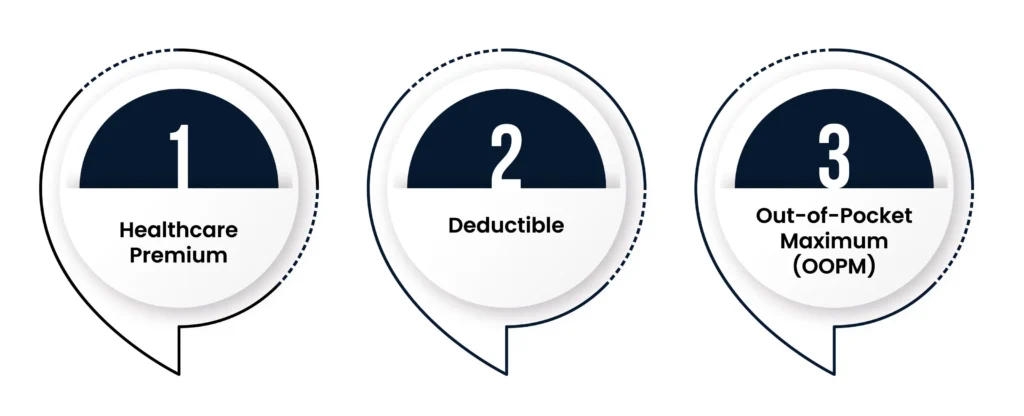
Heart Rate Variability (HRV) Explained Simply with Ways to Improve HRV
Heart Rate Variability (HRV) Explained Simply with Ways to Improve HRV Wearable tech is booming, and with it, our desire to understand our bodies on

If you’ve ever taken a deep dive into the world of medical insurance, you’ve likely been bombarded with a plethora of abbreviations and jargon. Terms like ‘deductible’, ‘premium’, ‘HMO’, and ‘PPO’ fly around, making the average insurance consumer feel like they’re trying to decode an alien language. Among the most commonly misunderstood terms are “coinsurance” and “copay”. In this blog post, we aim to demystify copay vs coinsurance, giving you a clearer understanding of what they mean and how they impact your out-of-pocket medical expenses. Let’s break it down.
Coinsurance meaning in healthcare insurance, is a portion of medical costs that you pay after your deductible has been met. It is typically represented as a percentage, and it refers to the amount you are responsible for paying for covered services after meeting your deductible. To get a better understanding of what is a coinsurance let’s demonstrate it with an example:
Suppose you have a coinsurance of 20% for your medical insurance plan, and the cost of your covered service is $1000. In this case, after meeting your deductible amount (let’s say $500), you would be responsible for paying 20% of the remaining $500. That means you would pay a total of $600 out of pocket, with your insurance covering the remaining $400.
If you have Medicare as your primary insurance, then the co-insurance will vary depending on the type of insurance you choose.
For medicare part A patients, there is no coinsurance until you have been hospitalized for more than 60 days in a single benefit period.
For medicare part B patients, the coinsurance is applicable for all covered services, where they must pay 20% of the cost.
Copay also known as copayment, is a fixed amount you pay for covered medical services. Unlike coinsurance, copay is not calculated as a percentage but rather as a specific dollar amount that you are responsible for paying each time you receive medical care. This amount is predetermined by your insurance plan and can vary depending on the type of service received.
To better understand what is copay in insurance, let’s look at an example. If your insurance plan has a $20 copay for doctor visits, you pay that amount each time you visit the doctor, regardless of the total cost of the service.
As defined earlier, the main difference between a co-payment and co-insurance? is how they are calculated. Below, we have outlined some other key differences to help you better understand the two terms:
Aspect | Coinsurance | Copay |
Definition | Your share of the costs of a covered healthcare service, calculated as a percentage (e.g., 20%) of the allowed amount for the service. | A fixed amount (e.g., $25) you pay for a covered healthcare service after you’ve paid your deductible. |
How it works | If your health insurance plan’s allowed amount for an office visit is $100 and you’ve met your deductible, your coinsurance payment of 20% would be $20. The insurance company pays the rest. | If your plan’s copay for doctor visits is $25, you’ll pay that amount, regardless of the total bill. The insurance company covers the rest. |
Dependence on Deductible | You start paying coinsurance after you’ve paid your plan’s deductible. | Copays are typically not dependent on whether the deductible has been met. |
Typical Usage | Often used in PPO plans. | Common in HMO, EPO, and PPO plans. |
You may also come across terms when discussing coinsurance and copay. These terms are closely related to the two concepts and play an essential role in understanding your insurance coverage. Some of these terms are:

A healthcare premium is the amount you pay for your health insurance plan on a regular basis, typically monthly. It’s a fixed cost that you must pay regardless of whether you use healthcare services or not.
Premiums vary depending on the type of health insurance plan you have and can be higher for plans that offer more comprehensive coverage. Paying your premium ensures that your health insurance coverage remains active, allowing you to access the benefits and services outlined in your plan.
A deductible is the amount you must pay for covered healthcare services before your health insurance plan starts sharing the costs. It’s like a threshold that you need to cross before your insurance kicks in.
For example, if your plan has a $1,000 deductible, you would be responsible for paying the first $1,000 of eligible medical expenses out of pocket. Once you’ve met your deductible, your insurance plan will typically cover a portion of your healthcare costs, and you’ll only be responsible for the specified co-insurance or copayment amount.
The out-of-pocket maximum, often referred to as OOPM, is the maximum amount you are required to pay for covered healthcare services in a given plan year. Once you reach this limit, your health insurance plan covers 100% of your eligible medical expenses for the remainder of the year.
The out-of-pocket maximum includes expenses like deductibles, copayments, and coinsurance, but it does not include your monthly premium. This financial safeguard provides peace of mind and protects you from catastrophic healthcare costs, ensuring that your healthcare expenses become more predictable as you approach and reach this limit.
The specific out-of-pocket maximum can vary depending on your insurance plan and is an important factor to consider when choosing a health insurance policy. It’s important to note that different plans may have different out-of-pocket maximums, so carefully review your policy documents to understand this limit.
Coinsurance payments count towards your deductible, while copays do not. This means that the amount you pay in coinsurance will contribute to meeting your insurance plan’s deductible amount.
The primary risk of high coinsurance is the financial burden. A higher coinsurance rate means you’re assuming responsibility for a larger portion of your medical costs. In a period of unexpected health issues or extensive medical needs, you might find yourself facing hefty medical bills.
For example, consider two scenarios involving an emergency room visit that results in a $10,000 bill. In both scenarios, you have already met your deductible for the year:
Lower Coinsurance: If your plan has a coinsurance of 20%, you would be responsible for paying 20% of the bill, amounting to $2,000, while your insurance would cover the remaining $8,000.
Higher Coinsurance: If your plan has a coinsurance of 40%, you would be responsible for paying 40% of the bill, which would be $4,000. Your insurance would then cover the remaining $6,000.
In this illustration, opting for a plan with higher coinsurance has doubled your out-of-pocket costs for this single incident. If you experience multiple health issues within the same year, these costs can aggregate and become financially overwhelming.
it’s essential to consider both copay and coinsurance when selecting a health insurance plan. While they may seem like minor details, these terms can have a significant impact on your healthcare expenses in the long run.
It’s important to carefully review and understand your health insurance coverage to ensure you are making an informed decision and getting the most value for your money. In addition, regularly reviewing your insurance plan can help you identify any changes or updates that may be beneficial to your healthcare needs. So take some time to familiarize yourself with these terms and make an informed decision when choosing a health insurance plan.

Heart Rate Variability (HRV) Explained Simply with Ways to Improve HRV Wearable tech is booming, and with it, our desire to understand our bodies on

What is a Healthy Body Fat Percentage and How to Achieve It Ever stepped on the scale, seen the number drop, but still felt like
Talk to an Expert Now